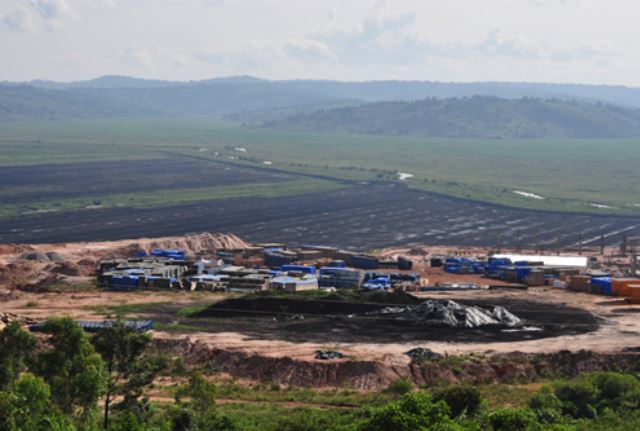Assessment of Carbon (CO2) emissions avoidance potential from the Nile Basin peatlands
Despite of peatlands importance in the Nile Basin region, it was only very rarely the target of wetland research (also soil and ecological research) and thus, available data is very rough and partly contradictory. This project aimed at filling in the knowledge gaps of peatlands distribution and degradation status, identify main land-use types associated with peatlands in the region and quantify the CO2 emissions avoidance potential.

Project description
This consultancy is commissioned by GIZ on behalf of the Nile Basin Initiative (NBI) through the support of the Federal Ministry of Environment / International Climate Initiative (ICI) (BMUB-ICI) of the Federal Republic of Germany to the project “Biodiversity Conservation and Sustainable Utilisation of Ecosystem Services of Wetlands of Transboundary Relevance in the Nile Basin (in short the NBI Wetland Project)” / PN 2014.9029.1.
Despite of peatlands importance in the Nile Basin region, it was only very rarely the target of wetland research (also soil and ecological research) and thus, available data is very rough and partly contradictory. This project aimed at filling in the knowledge gaps of the peatlands distribution and their degradation status, identify main land-use types associated with peatlands in the region and quantify the CO2 emissions avoidance potential from degraded peatlands for the Nile Basin countries to pave the way for informed policy-making decisions.

Peat powered energy plant -under construction- in Gisagara, Rwanda (photo: Hans Joosten)
The project has two sub-work packages: WP1 and WP2. The first work package was carried out over three simultaneous sub-packages: WP1.1, WP1.2 and WP1.3. WP1.1 mainly focused on the transboundary Nile Equatorial Lakes (NEL) wetlands as an area with considerable peatland extent. WP1.2 focused on the Sudd wetlands (South Sudan) as a huge flood plain of the Nile River including wetlands and peatlands. Despite of its major importance in the region, it was only very rarely the target of ecological, soil or peatland research and thus, available data is very rough and partly contradictory. WP1.3 focused on the peatlands of the Blue Nile, mainly in Ethiopia. All the results were synthesized and carbon stocks and CO2 emissions scenarios (2015-2050) were estimated using best available data for the countries in all the sub work packages.
WP2 included a discussion paper which explored the financial and policy options to tackle the CO2 emissions avoidance potential for the Nile Basin countries up to 2050. It took into account the present GHG sources inventories and MRV systems, as well as climate change related policies in place and compared them to the work done in WP1 and the recent international climate policies, e.g. IPCC 2013 Wetlands Supplement, obligations within the Paris Agreement and the present state-of the-art of international MRV systems. The discussion paper also aimed at proposing a scheme to develop climate change mitigation schemes for different types of land use and estimate reduction potential of these mitigation measures. The information could support the second round of the NDC drafting by countries.
All the results were presented at the Regional Working Group (RWG) of the NEL-SAP countries in Kampala, Uganda in April 2019 and at the RWG of the whole basin in Nairobi, Kenya in November 2019.
Goals and tasks
WP1:
Goal: Estimate the potential CO2 emissions avoidance potential from the Nile Basin peatlands.
Tasks:
- Map the peatlands distribution in the Nile Basin and provide an overview of their characteristics (vegetation, peat types, landscape types).
- Estimate their carbon stocks.
- Estimate the CO2 emissions scenarios in Business-as-Usual and rewetting scenarios.
WP2:
Goal: Provide an outlook for policy and carbon finance options to avoiding CO2 emissions from drained peatlands in the Nile Basin
Tasks:
- Analyse the existing NDC goals, with regards to wetlands rewetting vs existing situation.
- Recommend monitoring, reporting and verification pathways for the Nile Basin countries.
- Provide an outlook for existing carbon finance mechanisms and funding opportunities for rewetting.
- Provide a policy recommendation tailored for non-specialists.
Publications
Elshehawi, S., Barthelmes, A., Beer, F., Joosten, H. (2020) Technical Report: Assessment of Carbon (CO2) emissions avoidance potential from the Nile Basin peatlands. Nile Basin Initiative, 69 pp.
Elshehawi, S., Peters, J., Minayeva, T., Neher, A., Barthelmes, A., Joosten, H. (2020) Discussion paper: Options for financing emission avoidance from drained peatlands in the Nile Basin. Nile Basin Initiative, 19 pp.








